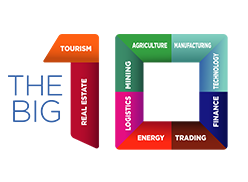The United Arab Emirates (UAE) is redefining what it means to build cities for the future. Once known primarily for its oil wealth and towering skyscrapers, the UAE is now emerging as a global pioneer in sustainable urban development. Through a bold and innovative urbanization strategy, the nation is creating smart cities designed not just for growth, but for long-term livability, environmental stewardship, and technological integration.
Here’s how the UAE is laying the foundations for future-ready cities that balance economic ambition with ecological and social responsibility.
Vision-Driven Urban Planning
The UAE’s urbanization model is shaped by long-term national agendas such as UAE Vision 2021, Abu Dhabi Vision 2030, and Dubai 2040 Urban Master Plan. These frameworks aim to create inclusive, diversified, and sustainable urban centers that enhance quality of life while reducing environmental impact.
Central to this vision are four key pillars:
-
Smart infrastructure
-
Sustainable mobility
-
Green building practices
-
Tech-enabled governance
This forward-thinking approach allows the UAE to manage rapid urban growth without compromising on sustainability or quality of life.
Smart Cities: The Digital Backbone
The UAE is at the forefront of smart city innovation, leveraging technologies such as AI, IoT, big data, and blockchain to optimize city living.
Dubai Smart City Initiative
Dubai is a global leader in smart urban transformation, with over 100 smart initiatives and more than 1,000 smart services. Key features include:
-
Smart traffic management and autonomous transport trials.
-
AI-powered public services through the DubaiNow app.
-
Blockchain-based government transactions.
-
Real-time monitoring of energy, waste, and water systems.
Abu Dhabi’s Digital Twin Projects
Abu Dhabi is using digital twin technology to simulate and manage infrastructure systems, improving urban planning and predictive maintenance.
Smart city development in the UAE is not just about technology—it’s about using innovation to deliver seamless, inclusive, and sustainable experiences for all residents.
Sustainability at the Core
Sustainability is woven into every aspect of the UAE’s urban development strategy. With the country aiming for net-zero emissions by 2050, urban planning plays a key role in reducing carbon footprints and promoting environmental stewardship.
Masdar City: A Global Model
Located in Abu Dhabi, Masdar City is one of the world’s first planned sustainable cities. Features include:
-
Solar energy grids and clean-tech innovations.
-
Pedestrian-first design and car-free zones.
-
Smart water and waste management systems.
Masdar City serves as a testbed for renewable energy and green architecture globally.
Green Building Regulations
The UAE mandates sustainability certifications such as Estidama (Abu Dhabi) and Al Sa’fat (Dubai), encouraging the use of energy-efficient systems, sustainable materials, and eco-friendly construction methods.
Mobility and Urban Connectivity
Smart, low-carbon transportation systems are critical to the UAE’s urban future.
-
Electric and autonomous vehicles are being actively promoted through policy and infrastructure investment.
-
Dubai’s hyperloop project could cut travel time between emirates to minutes.
-
The expansion of metro lines, bicycle paths, and EV charging stations is helping reduce car dependency.
These integrated transport solutions enhance connectivity, reduce emissions, and support inclusive access to services.
Inclusive Urban Design
The UAE’s urbanization strategy also emphasizes social cohesion and cultural preservation. New developments are designed to be:
-
Mixed-use, combining residential, commercial, and recreational spaces.
-
Accessible, with infrastructure that supports people of all ages and abilities.
-
Culturally rich, integrating traditional Emirati architecture with modern design.
The goal is to foster cities that are not only smart and sustainable, but also human-centric.
Challenges and Future Outlook
While the UAE has made remarkable progress, it still faces urbanization challenges:
-
Water scarcity and high energy demand.
-
Ensuring affordable housing and inclusive growth.
-
Adapting to climate change and rising temperatures.
However, the government’s proactive approach, combined with international partnerships and private sector engagement, positions the UAE as a global leader in future-ready urban development.
Conclusion: A Blueprint for Tomorrow
The UAE’s urbanization strategy is more than a national plan—it’s a blueprint for how cities around the world can grow smarter, greener, and more resilient. By blending innovation with sustainability and cultural sensitivity, the UAE is building cities not just for economic expansion, but for the wellbeing of generations to come.
In the UAE, the future isn’t something to wait for—it’s already being built.
Read more on The Big 10:
UAE as a Regional Business Hub: How It’s Shaping the Middle East’s Economic Future
Oil and Gas in the UAE: Innovation and Diversification in the Energy Sector
How the UAE is Strengthening its Global Economic Ties: Trade Partnerships and Diplomacy


